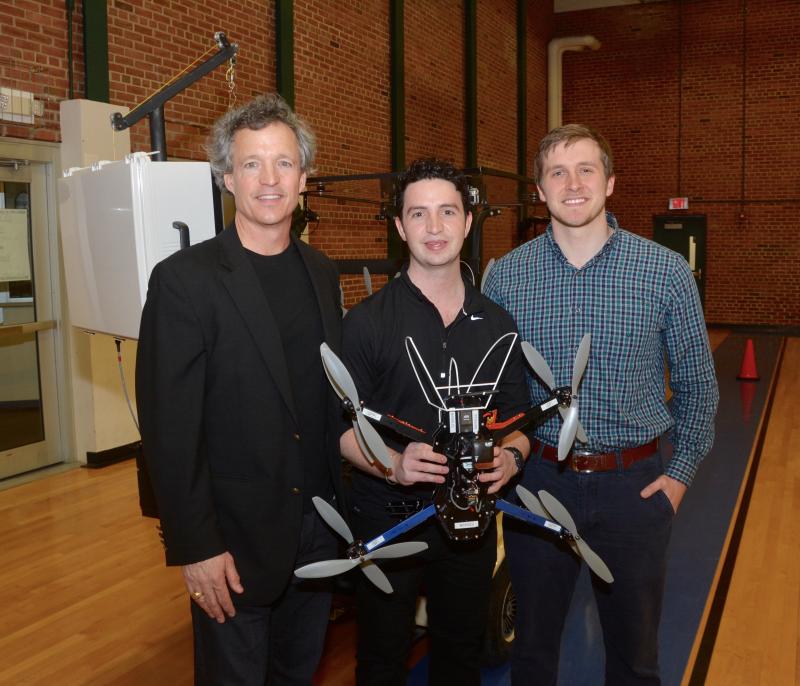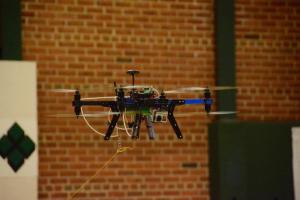A Lewes family-based business is on the cutting edge of drone technology.
Mark and Kyle Ryan of Ryan Media Lab demonstrated their tethered flying system during a March 15 seminar – Drones for Delaware – at Delaware Technical Community College in Georgetown.
The Ryans have invented a tethered drone system designed to allow pilots to have more control of their flights, potentially allowing them to fly drones within 100 feet of the public.
Current Federal Aviation Administration regulations require drones to leave a space of at least 500 feet from people.“We want to get the camera as close as possible to the subjects,” Kyle said.
FAA officials saw a demonstration of the Ryans' technology Feb. 11 in the Jason Technology Building on the Owens Campus, the site of the seminar. A decision by the FAA to allow flying a tethered drone closer to the public is pending.
The Ryans started their business in 2013 to provide aerial images for businesses and of events, sports and concerts to online media outlets, but quickly realized they needed to fly their drones close to people for better images and video. That's where the idea for a tethered drone system was born.
Using the system, a drone is attached to a base station with up to 4,000 feet of high-strength fishing line. To increase mobility, the base station is attached to a golf cart.
The Ryans point out that media applications for drones are only one phase of a drone's potential.
Mark wrote the following in an August 2015 posting on fedscoop.com:
“Drones can be eyes in the sky searching for missing persons, first eyes on dangerous situations like hazardous material spills, or other major accidents, firefighter and police actions.
“Even mundane tasks can be done more efficiently, at lower risk and cost, such as surveying roofs and exteriors of public buildings, and public outdoor assets, such as water supply systems or wastewater treatment facilities. With tethered control over the drone, federal and state chief information officers can have access to drone technology today without the risks that come with free-flying drones.”
Several companies – including Amazon – are exploring the use of drones for deliveries.
At the state level, Delaware Department of Transportation officials are looking at ways to use drones in a variety of applications including inspections and the collection of real-time traffic data.
Another speaker at the seminar, Shyam Chidamber, an entrepreneur and educator, compared drone technology to computers and the internet as far as future applications are concerned. “It’s the next big thing,” he said.
Drones, or flying robots as he calls them, could have an impact on every current industry – from agriculture to healthcare.
He said results are already being realized in agriculture. He said 40 percent of the Japanese rice crop is grown by farmers using drones to aid in precision farming. He said drone-assisted farming can raise productivity 15 percent and can dramatically reduce costs for crop maintenance.
He said it’s been estimated that by 2025, drones will create $85 billion in revenue and 100,000 new jobs. “And that’s a very conservative estimate,” he said.
“I think Delaware and Delaware Tech can play a leadership role and show the rest of the country what can be done,” he said.
The seminar occurred at all three Delaware Tech college campuses on the same day.
FYI
Drones used for commercial purposes must adhere to strict FAA guidelines that require a certified pilot to operate them.


























































